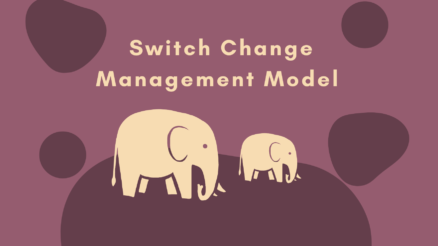Organizational change is a new normal in today’s business world.
Whether it’s adapting to market trends, embracing new technologies, or responding to global shifts, effective change management is a crucial skill for any forward-thinking organization.
For that change to happen, engagement with key stakeholders is crucial.
The first step towards stakeholders’ engagement is that who are exactly stakeholders and why they are relevant to proposed change.
This all starts with doing change management stakeholder mapping.
This process involves identifying, analyzing, and understanding the individuals and groups who can significantly impact or be affected by a change initiative.
In this blog post, we’ll explain how to conduct change management stakeholder mapping and also learn from examples of world’s leading organizations that how did they conducted that mapping.
Let’s explore this and start reading.
Why Stakeholder Engagement is Important for Change Management?
Stakeholders are employees, leadership, customers, partners that bring diverse perspectives, experiences, and insights to organizations.
Stakeholders are not mere observers; they are active participants who can significantly shape the trajectory of a change initiative.
Stakeholder engagement is crucial for effective change management for several reasons.
Here are five key reasons why engaging stakeholders is important in the context of change management:
Identifying and Managing Resistance
Stakeholders may resist change for various reasons, such as fear of the unknown, concerns about job security, or a lack of understanding about the benefits of the change.
Engaging stakeholders early in the change management process allows for the identification of potential sources of resistance. By understanding their concerns and addressing them proactively, you can mitigate resistance and increase the likelihood of successful change implementation.
Building a Coalition of Support
Successful change often requires a coalition of support from key stakeholders. Engaging with stakeholders helps build trust and commitment to the change initiative.
When influential stakeholders are on board, they can act as advocates for the change, positively influencing others and contributing to the overall success of the change effort.
Gaining Valuable Insights
Stakeholders possess valuable insights and perspectives that can inform the change management process.
By involving them in discussions and seeking their input, you can tap into their knowledge and experience.
This not only enhances the quality of the change plan but also fosters a sense of ownership among stakeholders, making them more likely to embrace the proposed changes.
Enhancing Communication
Effective communication is a critical aspect of change management. Engaging stakeholders ensures that communication is two-way, allowing for the exchange of information, feedback, and clarification of concerns.
Clear and open communication helps manage expectations reduces uncertainty, and fosters a positive environment for change.
Read more about: How to communicate change to stakeholders?
Ensuring Sustainable Change
Sustainable change requires ongoing commitment and support from stakeholders. By involving them throughout the change process, you increase the likelihood that the changes will be embedded into the organizational culture.
Stakeholder engagement promotes a sense of shared responsibility and accountability for the success of the change, making it more likely to endure over the long term.
Steps to Conduct Change Management Stakeholder Mapping
Here are the most common steps involved in conducting change management stakeholder mapping.
1. Define the Change Objectives
At the start of any change project, it’s crucial to make the objectives and goals perfectly clear. During this foundational stage, organizations must carefully define what they want to achieve through the upcoming transformation.
This involves a thorough understanding of desired results and what’s driving the need for change.
By developing a detailed plan, organizations can offer stakeholders a vivid and convincing picture of what the future will look like.
Harmonize the objectives with the organization’s broader strategic goals: Change initiatives aren’t isolated actions; they’re integrated parts of an organization’s bigger plan.
Aligning the change objectives with the organization’s overall strategic goals guarantees consistency and synergy.
This step establishes the foundation for a change initiative that is strategic and firmly rooted in the organization’s overarching purpose.
2. Identify Key Stakeholders
Effectively navigating change requires a meticulous identification of key stakeholders—those individuals and groups whose involvement can significantly impact or be impacted by the change initiative.
The distinction between internal and external stakeholders lies in their direct or indirect relationship with the organization.
The internal stakeholders are frontline employees who are directly affected by organizational change, middle and senior management who drives change and top leadership who sponsors change.
The external stakeholders are customers, suppliers, shareholders, investors, partners, regulators, representatives of government institutions, local community, and competitor organizations.
Engaging both internal and external stakeholders throughout the change management process is critical for success.
3. Categorize Stakeholders
Not all stakeholders are equal in their influence or level of interest regarding the impending change.
By employing tools such as influence-interest matrices or power-interest grids, organizations can categorize stakeholders into different groups.
High influence, high interest stakeholders may require extensive communication and engagement, while low influence, low interest stakeholders may need minimal attention.
This categorization forms the basis for tailoring engagement strategies to meet the unique needs of each stakeholder group, fostering a more targeted and efficient approach to stakeholder management.
4. Analyze Stakeholder Needs and Concerns
Understanding the perspectives of stakeholders is essential for crafting a change initiative that addresses their needs, expectations, and concerns.
This phase involves a thoughtful analysis of stakeholder feedback, ensuring that the organization is well-informed and responsive to the diverse array of voices.
This analysis can be done through surveys, interviews and focus group discussions.
Surveys provide a broad overview, interviews offer in-depth individual insights, and focus groups facilitate dynamic discussions.
Once data is collected, prioritize and document the identified needs, expectations, and concerns of each stakeholder group.
Recognize common themes and variations within and between groups.
This documentation serves as a valuable reference throughout the change initiative, guiding decision-making and ensuring that the proposed changes align with the collective vision and aspirations of the stakeholders.
5. Assess Stakeholder Influence and Power
Recognizing how much power and control different stakeholders have is important for creating effective ways to work with them.
A careful evaluation helps organizations use their resources wisely and engage with stakeholders in ways that match their impact on the change project.
Visual tools like power-interest grids or influence matrices can show the relationship between how much power stakeholders have and how interested they are in the change project.
These tools give a structured way to analyze, helping organizations find the key stakeholders who have both a big impact and a strong interest in the project’s outcome.
By plotting stakeholders on these grids, organizations get a detailed picture of where each stakeholder stands in terms of how much they can affect the project.
6. Create a Stakeholder Map
Once you know who the stakeholders are, what they need, and how much they have influence, it’s time to make a picture that shows all of this in one place.
A stakeholder map serves as a dynamic tool, providing clarity on the interconnected web of stakeholders and guiding strategic decision-making.
Transform the wealth of information gathered into a comprehensive visual representation.
This could take the form of a stakeholder map, a diagram that illustrates the relationships, dependencies, and connections between various stakeholders.
This visual guide makes it easier to understand the complex world of stakeholders, and it’s a great way to show everyone, no matter their level, how the change project fits together.
The tools, like stakeholder map templates or special software, can speed up the process and make it more accurate.
They often have things like ready-made templates, easy drag-and-drop features, and options for working together with others. This makes it simple to communicate and update the stakeholder map as the change project goes on.
By using technology, organizations can keep a living document that changes as the relationships between stakeholders change over time.
7. Develop Engagement Strategies
Once you understand who the stakeholders are and how they work, it’s time to make plans to work with them.
To get everyone on board and prevent problems, it’s important to talk to each group in a way that makes sense to them.
Customize your plans to match what each group needs. Think about how they like to get information, how much detail they want, and how often they need updates.
Whether through town hall meetings, newsletters, or individual consultations, personalized engagement strategies enhance the relevance and resonance of the communication, fostering a sense of inclusion and understanding among stakeholders.
Try to figure out what worries people and deal with those worries before they become bigger problems. Ask for feedback and make it easy for people to talk to you.
Use what you learned from studying their needs to come up with ways to answer common worries. Make sure there’s a good way for people to share their concerns and know that you’re listening.
Dealing with problems before they get big doesn’t just mean solving problems – it also means being open and responsive. This can turn people who might be against the changes into people who support them, which helps make the changes work better.
Examples of Successful Change Management Stakeholder Mapping
We have listed few examples of the world’s leading organizations that explain how effective stakeholder mapping, when integrated into the change management process, can contribute to the success of organizational initiatives by fostering collaboration, addressing concerns, and aligning diverse interests.
Keep in mind that each organization’s context is unique, and the success of stakeholder mapping often depends on its integration with a holistic change management strategy.
Procter & Gamble (P&G) – Supply Chain Optimization
P&G, a consumer goods giant, underwent a significant supply chain optimization initiative.
They employed stakeholder mapping to identify key internal and external players. This included suppliers, distributors, retailers, and regulatory bodies.
By categorizing stakeholders based on their influence and interest, P&G developed targeted communication strategies.
They actively engaged with suppliers to ensure a smooth transition and collaborated with retailers to align inventory management systems.
The result was a more streamlined supply chain that enhanced efficiency and reduced costs.
British Airways – Terminal 5 Expansion
When British Airways decided to make Heathrow Airport’s Terminal 5 bigger, they used stakeholder mapping to figure out who was important, like the airport staff, the passengers, the people who make the rules, and the community who lived nearby.
By understanding the concerns and expectations of each group, British Airways tailored communication strategies.
They conducted regular forums to address community concerns, collaborated with staff for a seamless transition, and ensured passenger satisfaction through effective communication about the changes.
The successful opening of Terminal 5 showcased the importance of stakeholder engagement in large-scale infrastructure projects.
Microsoft – Cultural Shift towards Cloud Services
Microsoft’s transition towards cloud services required a cultural shift within the organization. Stakeholder mapping helped identify employees at various levels, customers, and third-party developers as key stakeholders.
Microsoft implemented a comprehensive communication plan, including town hall meetings, training sessions, and feedback forums.
By understanding what these important groups needed and making changes to meet those needs, Microsoft was able to make the shift inside their organization and get lots of support from outside for their cloud services.
Final Words
Effective stakeholder mapping is not merely a procedural step but a strategic way of managing change. It shapes a culture of collaboration, transparency, and responsiveness.
Through engaging stakeholders, organizations not only smoothly navigate change but also build a resilient and adaptive environment that is essential for sustained success.
And before that engagement starts, organizations need to follow a structured approach of conducting stakeholder mapping that would help to make that engagement systematic and impactful.



